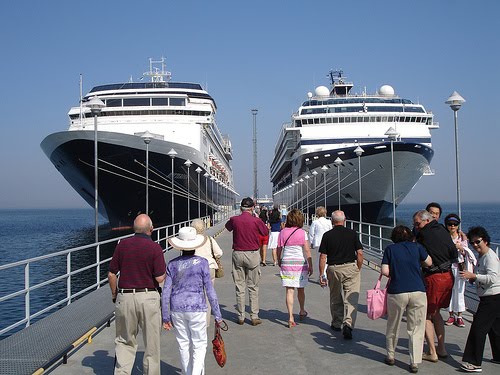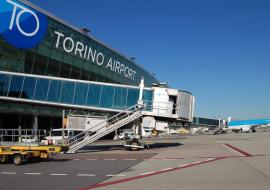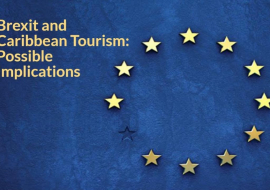It’s Official: Cruises Are for Lovers

Is sailing the high seas a romantic escape? It certainly seems that way, with four out of five respondents to a recent Royal Caribbean International survey saying that a cruise with their partner is more romantic than a land-based vacation.
So what’s a top priority for these couples? Well, most – a whopping 98 percent – rank sex as the top activity on their cruise itinerary. Plus, more than half (62 percent) of survey takers said that sex on their last cruise was better than normal.
With all that intimacy, it’s no wonder that 80 percent said they left their last cruise feeling more “connected” to their partner; 67 percent said they left their last cruise more in love with their partner, and 65 percent said they felt more attracted to their partner.
Looking to get to know the culture of the place you’re visiting? Dive into local food, says Anthony Bourdain, host of the Travel Channel’s “No Reservations.” That means finding out where the locals like to eat. But don’t ask the hotel concierge; she or he is in the business of making tourists happy.
You want the places that make locals happy. Another great place to visit if you want a taste of local cuisine is the local markets. Here you’ll see the basics of the cuisine plus you’ll often find locally prepared foods at stands or stalls serving the markets’ workers. And if you’re going to give the food a try, be sure to be appreciative. Smile and try to look happy, even if you don’t like it.
For the first 11 months of 2011, North American markets beyond the U.S. received 54 percent of all U.S. international outbound travel, with 18.1 million visitors heading south to Mexico (34 percent of all U.S. outbound travelers) and 10.8 million going north to Canada (20 percent). Outside of North America, Europe received the most U.S. visitors, with 10.1 million or 19 percent of all U.S. citizens traveling abroad.
The Caribbean hosted 5.5 million U.S. travelers (a 10 percent share), while Asia had 3.8 million American visitors (7 percent share), Central America recorded 1.9 million (4 percent), South America received 1.5 million (3 percent), the Middle East had 1.2 million (2 percent), the Oceania region received 447,000 (1 percent) and Africa had 333,000 U.S. visitors (1 percent). Numbers are from a recent U.S. Department of Commerce report on U.S. citizens traveling abroad.
One special event that the Mexico Tourism Ministry is seeking to leverage to its advantage is the end of the Mayan calendar, on Dec. 21. 2012. Interest in the Mayan calendar provides the tourism ministry with the opportunity to promote the country’s many cultural attractions – beyond the beaches – stemming from history spanning three millenniums and 62 different ethnic groups, said Mexico undersecretary of tourism planning Ricardo Anaya.
Europeans and Brazilians enjoy considerably more vacation time (as measured by days given and days taken) than their peers elsewhere in the world. The average employed European earns 25 to 30 vacations days in a year and with only some exceptions tends to use them all. Brazilians typically earn – and use – 30 vacation days.
On the opposite end of the spectrum, North Americans receive roughly 14 vacation days, and most don’t even take them all. In 2011, most Americans took only 12 days off. Even worse off however are Japanese workers, taking a mere five days out of 11 available in 2011 and South Korean workers who took seven out of 10 days last year.
Nick Verrastro contributed to this article.













